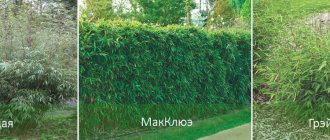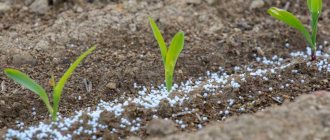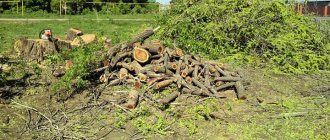In order for your lawn venture to be a success, you need to determine the type of soil in your garden. Depending on where you live, it may consist of different parts of loam, sand, limestone, clay or peat. Luckily, grass grows in any soil, but by determining the type of soil you have and its quality and condition, you'll know how to prepare it, whether you'll have drainage problems, what seed or turf to choose, and how to care for yours. lawn afterwards. Typically, garden soil consists of a top, fertile layer and a lower, much less fertile layer.
Soil for lawn grass: features
The soil for growing lawn grass needs careful preparation. Typically, the soil in dacha and garden plots is quite dry and not very fertile, especially if the area is located near a highway, factories and industrial enterprises. At the same time, natural soil rarely meets the requirements in terms of structure. Normally, for planting a lawn, the soil should be loose and porous. This way, the grass will receive air as it grows, which will affect its development. Lawn soil must meet the following requirements and have the following characteristics:
- neutral acidity level;
- high percentage of breathability;
- clay-sand composition.
It is best to use fertile soil from fields and arable lands for growing lawn grass. Clay soil will not be suitable in this case, since for the lawn to grow fully, it will need to be additionally fertilized with herbal mixtures and organic fertilizers. Before planting, the land must be thoroughly cleared of weeds and fertilized. It is best to use organic compounds as fertilizers: sand, peat, humus.
Percentage of soil, peat and sand
The composition of fertile soil can vary greatly depending on the subsequent load placed on it. On lawns intended for high loads (for example, on football fields), fertile soil consisting of 70% sand, 15% earth, 15% peat is most often used. Sometimes only a peat-sand mixture is used (80% sand, 20% peat). Plant nutrients and moisture are poorly retained in such soil. These factors must be taken into account.
In private areas, mixtures of
- 50% of the land
- 35% peat
- 15% sand
or
- 40% of the land
- 40% peat,
- 20% sand.
This mixture retains nutrients and moisture better. It is very important that all components of fertile soil are thoroughly mixed, the mixture does not contain large lumps and large roots, especially malicious weeds (horsetail, midge, wheatgrass, wormwood, sow thistle and others).
Types of soil for lawns
It often happens that to grow lawn grass you have to form the soil yourself. Experienced summer residents advise using special formulations in this case, in which the grass will fully develop and grow quickly. Common types of planting compounds:
- This includes components such as deoxidized peat, coarse sand, black soil or loam (50%-40%-10%).
- This includes components such as deoxidized or lowland peat, turf soil, sand (40% -40% -20%).
- The soil consists of fertile loam and sand (90%-10%).
At the stage of planning lawns, it should be taken into account that in order to grow a crop it is necessary to leave about 20 cm of fertile layer. For a rolled layer, 10 cm will be enough. If the lawn is laid under active activity, then the layer should be at least 40 cm.
Ryazan chernozem
There are very few fields where the fertile layer can be legally removed (and the vaunted Ryazan or Voronezh black soil cannot be removed by law!), so a mixture is included in the form of soil - the so-called pit. It comes in color from black to orange, in various shades. It's best if it's black. This color is obtained due to the large amount of phosphorites, which, in turn, are a mineral useful for plants.
Beware of offers from Ryazan black soil! Firstly, if this is actually black soil, then it was cut off by poaching. After such figures, for centuries and millennia, the unique fertile layer formed on the territory of our Russian Black Earth Region will not be able to recover. This is irreparable harm to the ecosystem. Secondly, in most cases, under the guise of Ryazan chernozem, they sell black lowland peat, which is an order of magnitude worse in terms of fertility. And what’s more, neither the lawn nor most plants will grow and develop normally on pure lowland peat. And due to the fact that most buyers do not even understand what chernozem is, lowland peat is successfully sold at exorbitant prices under its guise. And vice versa - many summer residents, having found out how much high-quality fertile soil costs, find the offer a little cheaper than this kind of “chernozem”. In the future, they will need to remove this poor-quality soil and transport it for disposal.
As usual, the rule “the stingy pays twice” applies here. It’s better to buy high-quality soil once and do everything right than to save on what is not needed, correct mistakes and do it all over again.
Sowing a lawn - soil
Features of soil preparation for planting
The rules for preparing the soil for planting lawn grass depend on the characteristics of the land itself on the site. The following types of natural soil are distinguished:
- Clay-sandy. In this case, the amount of sand and clay in the soil is at the level of 50%/50%. The soil has good friability.
- Sandy clay. The soil has a homogeneous composition, however, during the compression process it clumps tightly, which may not be very favorable for the lawn.
- Clay soil. This type of soil is characterized by increased dryness and the presence of cracks. The earth clumps well.
The third option is humus. The soil has a rich black tint and a characteristically pronounced odor.
Humus
Among all the options presented, humus is considered the most acceptable soil. This type of land is considered the most fertile. However, humus has high acidity, which can cause weeds to appear on it. All of these conditions can become unfavorable for lawn grass growth.
Also, humus has a fairly dense structure, so the supply of oxygen to the plants is at a minimum level. If there is a large amount of humus in the area, then it is necessary to dilute it with sand to reduce the acidity. The optimal indicator is 6 pH.
Clay
Clay soil is the most unfavorable type of soil. Such soil, in principle, does not allow air and moisture to pass through to the plants, which can cause their growth to slow down. If the percentage of clay in the soil is high, then the lawn will not be able to grow on it. If the site has clay soil, it will be necessary to make a top fertile layer, which will consist of organic components.
Acidity in this case should also be at a neutral level. The thickness of the layer for a lawn must be at least 20 cm. If we are talking about sports fields and recreation areas, then the thickness must be at least 40 cm. In this case, it is best to rely on peat mixtures, since they suppress the properties of clay.
Sand
If the site contains soil that is dominated by sand, then the soil will need to be enriched with chernozem. If this is not possible, then it can be replaced with a small amount of humus. If clay-sandy soil predominates on the site, then it can be improved by sowing with green manure.
These are plant crops that help enrich the soil. This method is considered less expensive. In the process, the ground is sown with green manure, covered with cellophane, and the film is removed after the first shoots appear. Then the entire area is dug up and lawn grass is planted.
How to make a plot fertile
You may have encountered the following problem: despite feeding, the plants grow poorly and bear little fruit.
The thing is that not only the amount of fertilizers is important, but also their digestibility. Therefore, instead of the next dose of ammonium nitrate or nitroammophoska, it is worth structuring the soil, that is, increasing its absorption capacity
Plants love it when the soil consists of lumps saturated with moisture and nutrients, and in the spaces there is a lot of air saturated with oxygen. There are different ways to structure the soil in this way.
9 ways to restore soil fertility If the soil increasingly produces weeds instead of bountiful harvests, read our tips.
Recently, humic preparations have gained popularity. They contain natural humates - substances that activate the work of beneficial bacteria, stimulate plant growth and increase their resistance to diseases and pests, and also improve the physical properties of the soil.
Most often, humic additives are produced in liquid form. The products benefit plants at all stages of development, so you can use them not only for feeding, but also for soaking seeds before sowing and applying them to the hole before planting.
Peat, vermicompost and sapropel (silt deposits) contain natural humic substances.
To cultivate the soil, you can also use modern EM preparations. They contain effective microorganisms that actively reproduce and thereby destroy painful microflora and form nutrients for plants from organic matter. To treat 1 square meter of area, dilute 3 ml of product in 3 liters of water. These rules will help you enhance the effect of the drug:
- It is better to carry out treatment in May, when the air warms up to 15°C and microorganisms begin to actively multiply;
- before watering, be sure to add organic matter to the soil, which will serve as food for beneficial bacteria;
- cover the treated area with polyethylene - the heat will trigger the growth and reproduction of microorganisms;
- Before planting plants, wait 2-3 weeks after treatment, this will allow the microflora to be evenly distributed and integrated into the food chain.
Strictly observe the dosage so as not to oversaturate the soil, otherwise microorganisms will begin to process the planted plants.
So, you have learned more about the composition of the soil, figured out what kind of soil you have in your dacha, and even studied ways to improve it. Continue observing. You can even keep a diary where you will record the changes that occur in the soil from year to year. Read additional literature, deepen your knowledge, and the plants will feel great!
Features of soil preparation
If the soil on the site is not considered fertile, then before growing the soil it is necessary to plant green manure, which will help improve the quality and properties of the land. Oats can be used as green manure. When the plants grow to 10-12 cm, the entire area will need to be dug up, covered with film and left for 1-2 weeks. This procedure will help get rid of weeds, and the soil itself will become more fertile and moist.
The thickness of the fertile layer depends on the characteristics of the site. If you plan to grow a parterre lawn, then the fertile layer should be at least 50 cm. A meadow lawn should have a layer of about 20 cm, provided that organic fertilizers are applied to the soil regularly.
If we are talking about seeded and rolled lawns, then the ground will first need to be fertilized with organic compounds. In the first case, sand, peat, and compost are added. The second contains sand and peat mixtures. Further preparation looks like this:
- The area where lawn grass will grow will need to be carefully dug up. In this case, the depth should be within 20 cm. Otherwise, the fertile layer may be damaged.
- Soil preparation should occur 2-3 months before planting lawn grass. If the operation takes place in the spring, then the soil should be prepared in the fall. For autumn planting, the ground is prepared in the spring.
- Using a rake, the ground must be leveled.
- The area needs to be watered.
If there is a need (for example, when it was not possible to reduce or increase the acidity of the soil at the preparatory stage), then before planting you can once again fertilize the area with organic compounds (peat, humus, sand), and then begin planting the crop.
Digging
As we wrote at the beginning of the article, there are lucky people who do not need to worry about the quality of the soil on the site. But this does not mean that you can avoid digging up the soil before planting. You can call for help with heavy equipment (a cultivator), or you can get by with a shovel (which will be even better). By the way, digging is another opportunity to remove weeds from the soil that were not killed by chemicals. Dig dry soil 25 cm deep. This is the so-called single-tier digging.
Is there a two-tier dig? Yes. This digging is used for areas of land that have not been cultivated for a long time. A furrow is dug across the lawn area to a depth of 25 cm (the bayonet of a shovel), and the layer of soil is loosened with a pick. In the next furrow you need to select loosened soil and cover it with soil from the previous furrow.
By digging up the ground, you solve several problems at once: remove the remaining weeds and fertilize the soil
But if the soil for sowing a lawn leaves much to be desired, then you need to think carefully about how to prepare the soil for the lawn. There is an option to replace the existing soil with fertile one. This is a complex process. You need to remove 20 cm of soil and fill another one. You ask: “where can I get the right soil for a lawn?” This is done like this: mix part of the manure + 2 parts of peat + part of loam. Here is the answer to the question of how to prepare fertile soil for a lawn. The second option is not so labor-intensive, because it only involves enriching infertile soil. To do this, add peat, manure, sand and loam to the existing soil and dig up everything with the old soil.
What soil is best for lawn grasses? Experts say that this is loam with a neutral pH level.
As a rule, digging is accompanied by laying a drainage system. Before sowing seeds, you need to install communications and drainage. If the groundwater is deep, then construct surface drainage. Surface drainage serves only to remove excess moisture after precipitation. In other words, it prevents puddles from accumulating. If groundwater comes close to the ground, then deep drainage is needed. Please note that creating deep drainage even requires consultation with a specialist.
Common gardening mistakes
When preparing land for planting lawn grass, many summer residents make mistakes that lead to slow growth of the plant crop. Below are the most common ones:
- There is no leveling of the fertile layer. In this case, the lawn grass will take root worse. Sometimes a crop basically doesn’t take root and dries out.
- Planting a lawn near concrete paths. If there are concrete slabs or paths near the site, the grass may grow slowly or dry out due to the influx of cement.
- No watering in the first days after laying the lawn. If the crop does not receive moisture, it can lead to dryness and slow growth. Sometimes the grass does not take root at all without initial watering.
- No fertilizers. In order for the lawn to be bright and lush, it requires proper care. Regular feeding is considered one of the main rules for full growth. In this case, the soil for the lawn should be fertilized with organic compounds. It can be humus, sand, peat.
Summer residents should take into account that an excess of moisture and fertilizers also negatively affects the development of plant crops. In such situations, the grass may have a yellow tint, grow slowly, and dry out quickly. In everything you care for, you need to maintain a balance.
We remove garbage
To get a beautiful and well-groomed lawn, it is important that the soil for the lawn is initially completely cleared of all debris. It could be small debris - leaves, paper, small stones; and large - stumps, trees. It is important to pick out all the garbage from the site, but under no circumstances bury it, because over time it will begin to interfere with the growing root system, and inconvenience may arise when using lawn equipment. You will, of course, have more work if the selected area has not been cultivated before, but regardless of whether you plan to sow or lay rolls of lawn, the work on preparing the soil for the lawn will be the same.
Remove debris and level the area
Also, a special place in cleaning the area for the future lawn should be given to the destruction of weeds. This can be done by removing the layer of soil with a shovel (this, by the way, is the most environmentally friendly way), or you can take advantage of the achievements of the modern chemical industry and treat the soil with herbicides, which, penetrating directly to the root system, will destroy all the weed. And although the newest chemicals do not accumulate in the soil, we would advise sowing the area with seeds only after 1.5 months.
How to remove weeds (video)
Benefits of soil for lawn grass
In rare cases, in summer cottages in Russia there is natural soil suitable for the full growth of lawn grass. It usually lacks fertility and moisture. Therefore, most often for growing crops, a composite soil is used, which is diluted with organic mixtures. It can be purchased or compiled independently. It is best to choose ready-made formulations, since they contain the optimal amount of main components. Advantages of such soils:
Ready-made compositions for planting lawn grass make it easier for summer residents to subsequently care for the crop. In this case, you will need to fertilize and water less frequently. If you plant a lawn on unprepared soil, then in order for it to take root, you will need to regularly feed the soil with organic compounds, water it in a timely manner, monitor the condition of the grass, and quickly eliminate all negative external factors that can harm its growth as quickly as possible.
To conclude the topic, here is a video related to it:
Was this article helpful? We want to improve. Thanks for your opinion!
Alignment
Preparing an area for a lawn involves carefully leveling this area, so that later, when mowing, it does not turn out that on the hills you cut it bald, but in the pits, on the contrary, you left it too long. Uneven surfaces can also damage the sharp blades of your lawnmower. To level the ground, we select a rake as a tool and walk it lengthwise and crosswise along the dug up ground. Always level the area, looking at it from the side. Transfer the soil where there is more of it into the holes for uniformity. After leveling, watering is needed to allow the soil to settle. When it dries, the unevenness will appear again, and you will need to repeat everything.
If you liked the article, please share it
Previously on the topic:
Share
Tamping
Lawn preparation includes tamping. For future sowing of seeds, the soil must be compacted. Compact the dug up and leveled soil with a hand roller weighing approximately one hundredweight. Although you can use a simple board. No one should be allowed to roll the earth after or during rain. Walking on compacted and compacted soil is not allowed. Carefully compacted soil will allow the seeds to lie evenly in the ground, and this in turn will help them swell and sprout.
It is better to do tamping in dry weather.
We have figured out how to compact the soil under the lawn, now let's move on to the next final stage.
Average prices for cultivation and other services
If you don’t have the opportunity or desire to carry out the preparatory work yourself, you can turn to professionals who have special skills and experience, and also have all the necessary equipment, for help.
Typically, such services are provided by lawn companies.
The cost of site preparation services is calculated taking into account the following indicators:
- area of the plot (prices are taken into account per 1 m²);
- type of lawn (roll or seed);
- condition of the site;
- soil type;
- the presence of waves, hills.
Average prices per 1 m² for such work are:
- soil cultivation – 30 rubles;
- weed removal – 15 rubles;
- surface leveling – 15 rubles;
- compaction – 10 rub.
Preparing light soils will cost less, while difficult soils may require you to pay 20-30% more.
To calculate the price per hundred square meters, you will need to multiply the presented figures per square meter by 100.
Chernozem
Firstly, what is sold as black soil is often not black soil at all. It could be bottom peat or something else. The export of chernozem from chernozem regions is prohibited, although there is a chernozem anomaly in the Moscow region in the Serebryano-Prudsky district. Secondly, chernozem is a soil of a different climatic zone; it has its own water-air regime and quickly loses its properties in an atypical zone. When dry, it sticks together, forming a fairly solid structure. Thirdly, the price. The most suitable soil for a lawn is sandy loam or light loam.
So, we have derived the formula for soil for a lawn:
- 50-60% - medium or light loam,
- 10-15% - peat;
- 25-40% - sand (it is better to choose coarse-grained river sand).
This topic is controversial and causes a lot of controversy between agronomists and engineers, each with their own vision of this process.
Various types of landscaping help make the area near the house well-groomed and beautiful. The choice of specific methods depends on the preferences of the owner, the area and topography of the site. Ponds, paths, green spaces, lawns and garden furniture - all these are not only decorations, but also practical details of the site, designed to create comfort and coziness in the open area.
Caused by psychrophilic fungi from the genus Typhula, class Basidiomycetes. There are several types: simply “Gray snow mold” - the causative agent Typhula incarnata, “Gray mottled or spotted snow mold” - the causative agent Typhula ishicariensis.
Source of the article: https://greenturf.ru/zapiski-agronoma/kak-vybrat-grunt-dlya-sozdaniya-rulonnogo-gazona/
Work immediately before sowing seeds
After the work has been done, we can say that the area for planting a lawn is almost ready. Only small nuances remain. Immediately before sowing, you need to sprinkle complex fertilizer on the soil and rake it . You will also use a rake to remove any unevenness and debris that has arisen again. The area for the lawn should have a grainy surface with a dense middle.
If you can wait a little (a month or two), then the area prepared for planting can be allowed to stand fallow. This will make it possible to prepare the area for sowing even better, because after fallowing the soil shrinks even more, and this, in turn, reveals new defects that can now be eliminated. Preparing the ground for a lawn involves a lot of work and it will be a shame if it turns out that you did not clear the ground of weeds very well, and fallowing the ground will help cope with this problem, because two months after resting, weeds that you missed will certainly appear on the ground, and they can still be removed before sowing.
Now all that remains is to loosen the soil again with a rake and sow the seeds
Step by step guide
In order not to miss the sequence of how to properly prepare the site, we offer the following list of works:
- Experts in the field of landscape design advise not to create areas with sharp corners and complex kinks in lines;
- Start cleaning the area in mid-spring, because by then it will already be warm and still quite humid;
- If there is a concrete path along the path of the future lawn area, then it must be destroyed right down to the foundation;
- When leveling the ground, bumps and convex irregularities can be removed with a hoe;
- Add sand to heavy soil, clay to light soil, improve poor soil with compost;
- Now is the time to install irrigation systems and lawn screens;
- It is advisable to make a very slight slope so that water can flow behind the lawn area;
- If necessary, adjust the soil pH using dolomite flour, chalk and lime;
- To effectively control weeds with chemicals, leave the soil cleared of debris and leveled for at least a couple of weeks for all the weeds to germinate;
- A layer of coarse sand and gravel will provide excellent drainage;
- Digging the soil should be carried out in autumn or spring and do not miss large blocks of earth;
- Leveling the soil with a roller does not allow excess moisture to penetrate to the roots or, conversely, to stagnate on the surface;
- An alternative to a roller can be a flat log or an empty gas cylinder;
- On a small lawn area, a large heavy roller can be replaced with a board attached to the legs;
- Nowadays, specialized companies are ready to quickly and efficiently do all the preparatory work for you;
- Remember that preparing the land is like laying a foundation; mistakes will be almost impossible to correct in the future.
As you can see, there is quite a lot of work involved in laying out a lawn with your own hands, but this work is very interesting, and its results will please you for a very long time.











